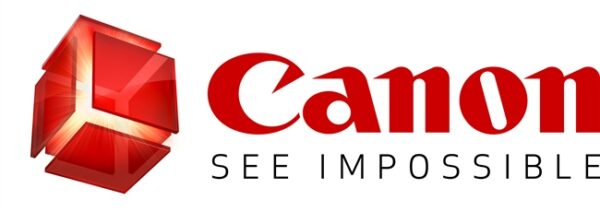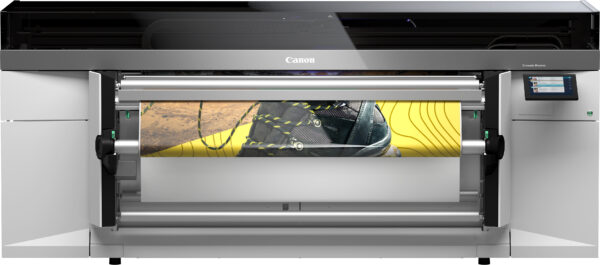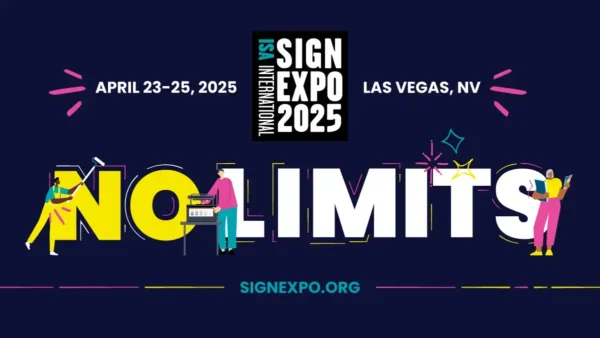Strategies to sell more production and industrial print software.
Behind every good piece of production and industrial print hardware is software that drives the workflow and manages and enhances the output. With so much attention focused on selling the hardware, dealers should not overlook the software. Admittedly, most dealers that sell production and industrial print don’t neglect the software, but for those that are most successful, a few proven strategies consistently come into play.
Hire a Specialist
To hire or not to hire a production print specialist should never be the question. Hiring a specialist is a proven strategy that has made a difference for every dealer we’ve spoken with whenever we inquire about their production print business. While most production print specialists have a deep knowledge of the equipment, they also possess a general knowledge of the software and where the different software solutions fit into a dealer’s hardware portfolio. When more technical knowledge about the software or the implementation is needed, an analyst or systems engineer can discuss the specifics of the software and assist with the implementation, which can sometimes be a challenge for the average production print specialist.
Production print specialists are critical to the growth of the production and industrial print business at Atlantic Tomorrow’s Office in New York City and RJ Young in Nashville, Tennessee. The production-print specialists at RJ Young double as sales reps and are well versed in solutions and software. There is also an analyst on staff who can do deeper dives into the solutions and software. RJ Young also has four network analysts, an enterprise account support person, and two G7-certified color experts. RJ Young’s analysts are incentivized to look for software opportunities and are involved in any customer engagement, including pre-sales walk-throughs.
“We take a very consultative approach in our sales,” explained Josh Santos, RJ Young’s director of production print. Santos’s team is well versed in software solutions and how those can streamline processes and make customers’ workflows more efficient. “My analyst and production specialist work as a team. That way, when the production specialist is asking questions about hardware, the analyst can follow through on the software and the business outcomes.”
At Atlantic, a production-print systems solutions analyst or production-print solutions engineer is responsible for matching the customer with the software. They typically assist with the presentation and ask questions such as, how do you receive your information or your jobs?
Some customers send in their jobs via email, while other customers, believe it or not, according to Atlantic’s Vice President of Production Print Luis Villa, still write down job orders on goldenrod paper. Both methods are prone to errors compared to a web-to-print e-commerce solution. Villa can sell both the hardware and the software thanks to his print industry background and extensive knowledge of the solutions in Atlantic’s portfolio, some of which can be quite expensive. “You need somebody to know that piece and be able to speak intelligently about it because you don’t want the cost to scare somebody away,” he said.
Having G7 Expert or G7 Professional certified personnel on staff is equally critical for dealers selling production color. Villa recommends Idealliance’s G7 program for acquiring these certifications. (See sidebar for descriptions of the two certifications.)
Equally important for a dealer that wants to be successful selling production or industrial print is knowing who to call when deeper knowledge is needed. One of those experts is Kevin Klansky, solutions development manager at Ricoh USA. He focuses exclusively on Ricoh’s dealer channel, which consists of about 45 production dealers. At any given week, Klansky might be at any given dealer location, assisting reps in the field or on-site. It’s not unusual for him to participate in open houses at dealerships that are focused on production print, talking to customers and prospects about different software solutions.
Listen, Learn, and Sell
Although customers may not know the exact solution they are looking for, Santos finds many have become more knowledgeable. “Everybody’s asking questions,” he said. “How can I get this more automated, how can I simplify my workflow, and how can I save some money? And a lot of these software solutions are pretty affordable.”
When those questions arise, that’s an opportunity for RJ Young’s analyst to discuss software such as Océ PRISMA workflow software, EFI’s MarketDirect web-to-print software, or RSA’s WebCRD web-to-print solution, as well as many others. “The whole thing is based on efficiency and moving things upstream, and how can they save money and create a nice workflow,” said Santos.
Although it is critical to get buy-in from the owner of an in-plant or printshop, Villa often makes a point of talking to the operators on the print-shop floor before he proposes a solution. They can describe the entire process of receiving a job to completing it and explain any quirks in the process, for example, saying, “This is what happens a lot.” This input is invaluable when it comes time to show the owner why the software, which can sometimes cost up to six figures, is a prudent investment.
“Anybody can sell you a box basically, but there’s another piece, getting the work to the unit and out the door,” said Villa.
A Bundled Approach
Villa likes to sell the software with the hardware because he said it’s not a commodity like a machine, where the lease rate is a big factor. “If not, it becomes crazy expensive because the leasing companies always want something back,” said Villa. “You can’t give them software back because it has no value [to them].”
Klansky agreed. “With the hardware, you’re going to get a substantial discount on the financing. So that’s a good way to go about it; make it one package, then they get better lease rates, and the payments can be spread out.”
For Santos, it doesn’t matter whether the software is sold with the hardware although he’s been seeing more standalone software sales of late. With some production print software being brand agnostic, that’s an asset. “What we’re finding with RSA’s WebCRD or EFI’s MarketDirect, for instance, is that these can line up with any hardware,” said Santos. “If a customer has done business with Xerox in the past, and they’re still three years out [on their lease], we can sell them MarketDirect or any of our other software offerings with or without being Canon- or Ricoh-specific and implement that into their workflow, get their efficiencies up, and meet the objectives that they want to hit.”
The Match Game
While some software vendors such as RSA and EFI tout the brand agnosticism of their solutions, that’s not the case with software from production-print vendors such as Canon and Ricoh. “From an EFI or an RSA standpoint, we’ll put it on whichever device makes more sense for our customer,” said Santos.
The criteria RJ Young uses to determine that are applications. “We look at the hardware, the workflow, and the print that’s coming out of the shop, and then, we decide if it fits better in a Ricoh portfolio or in Canon’s portfolio,” said Santos. “And then we engage those subject-matter experts at Canon or Ricoh, and they pretty much hold our hand from front to finish.”
“We have a portfolio rich with software solutions, the reason being, we want to help meet the demand of the customer,” added Ricoh’s Klansky. “If I had a dime for every time a customer asked me while we’re talking to them about hardware, do you have something that can help me do this? That’s a software thing, and my answer is, a matter of fact, we do.”
Ricoh’s portfolio is robust in solutions at every touchpoint. Not only does Ricoh have its own portfolio of software solutions, but it also partners with what Klansky described as some of the best in the industry: EFI, Objectif Lune, and RSA, as just three examples. “We have literally thousands of line items, and it’s almost impossible for a sales rep to understand what they do and where they fit,” said Klansky. “Then, they get lost in the soup of solutions and don’t do anything. What we try to do is educate [sales reps] about where they fit.”
The key to selling software, he emphasized, is teaching the sales reps to understand the major touchpoints in the manufacturing process, and how to sell to the manufacturing process along with asking the right questions. “Then, the solutions come to you,” said Klansky. “As they understand, at least, what the print shop goes through for every job and the major touchpoints, and they ask questions, the customer will share, ‘oh, I got real trouble with this pre-press type of thing.’”
That’s often when the rep or the specialist brings in Klansky to discuss a solution to this problem with the customer. Klansky and his team can also provide a dealer’s sales reps and production-print specialists with qualifying questions. For example, with a web-to-print solution, they might ask a customer how the print shop receives orders to get a better idea of the job onboarding process, or how they create quotes, do job ticketing, if services are outsourced, and generate turnaround times, for example.
The responses to these questions can usually identify bottlenecks in the printing process and help customers better understand how the software can save them time, energy, money, and labor, which leads to higher profits and growth. The end game is to generate a lead, get some interest, and bring in an engineer. “When an engineer gets in early in the sales cycle, we sell more stuff,” concluded Klansky.
G7 Expert and G7 Professional Certifications: What’s the Difference?
A G7 Expert has demonstrated expertise in the field of color management, process, and quality control for proofing and printing, utilizing the G7 methodology. A G7 Expert can analyze color and print-related issues and take corrective action to bring systems and processes in control to a set method, standard, or specification with repeatable, predictable results.
A G7 Professional is typically an in-house quality/technical professional with knowledge in the field of color management, process, and quality control for proofing and printing utilizing the G7 methodology.
Source: Idealliance
Access Related Content
To become a subscriber, visit www.thecannatareport.com/register or contact cjcannata@cannatareport.com directly. Bulk subscription rates are also available.





